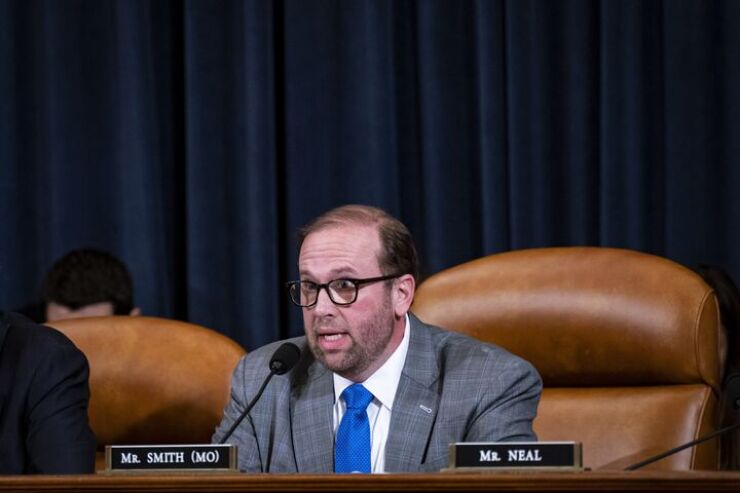The politics of higher ed: tax treatment at stake in election
5 min read

November’s election carries potentially high stakes for universities and colleges that have already found themselves facing the glare of Capitol Hill’s spotlight over the past year.
The new administration and Congress
The political uncertainty add strains to a sector already facing internal pressures and increasingly splitting into haves and have nots. Defaults are rising on a monthly basis, Municipal Market Analytics noted in a September default report. “In fact, at $1.06 billion, private higher ed is the third largest contributor to gross par impairments this year,” behind retirement homes and hospitals, MMA said. “For a sector with only a minimal history of actual, current (as opposed to theoretical, future) credit impairments, this is highly concerning for the near-term trend,” the firm said.
Higher-education supply has spiked this year along with the rest of the bond market. As of the end of August, it was up almost 40% this year to $27 billion, S&P Global Ratings analyst Jessica Wood said in a recent National Federation of Municipal Analysts’ webinar.
Prominent university officials have faced a bruising year on Capitol Hill as lawmakers criticized what they saw as a lackluster response to antisemitism during widespread pro-Palestinian campus protests. During a series of hearings, which led to resignations of some high-profile university presidents, House Republicans targeted the tax “benefits” enjoyed by nonprofit colleges and universities.
In January, House Ways and Means Committee Chair Rep. Jason Smith, R-Mo., sent a
“Ultimately, as the U.S. House committee with primary jurisdiction over tax-exempt institutions and the treatment of their endowments, we are left to wonder whether reexamining the current benefits and tax treatments afforded to your institutions is necessary,” Smith wrote in the letter.
Former President Donald Trump’s vice presidential candidate Sen. JD Vance, R-Ohio, has introduced bills that would raise the excise tax on endowment investment income to 35% from 1.4% for secular, private colleges and universities with at least $10 billion in assets under management and another that would impose a 50% excise tax on the endowments of universities that fail to remove encampments from their campuses. The legislation failed to advance in the Democrat-controlled Senate, though that calculus could shift next year depending on the election’s outcome.
Higher-ed advocates will be on the alert for threats from both parties during the tax debate next year, said Steven Bloom, assistant vice president of government relations at the American Council on Education.
“The Republicans have a number of bills they’ve introduced on the endowment tax so they’ve been the ones the most active, but if you’re looking for revenue, that’s an area that both parties could look at,” Bloom said. “Not that there’s much revenue that comes out of the tax-exempt community and higher ed in general, but there are ideas floating out there. In an environment where both parties are looking for revenue you have to be worried.”
The election will determine control of the House Ways and Means and Senate Finance committees. If Democrats take the House, Rep. Richard Neal, D-Mass., could retake the helm of the Ways and Means, Bloom said.
“We’d be pleased with that because he knows the higher education community and Massachusetts is a hub for higher ed in the U.S.,” Bloom said, adding that Neal is a former trustee at Mount Holyoke College.
The federal tax exemption is worth $1.7 billion, according to a
The debate over the state and local tax deduction is also important to higher-ed officials, said Tom Harnisch, vice president for government relations at the State Higher Education Executive Officers Association. “We will be watching how the SALT deduction plays out, since it affects the ability of states to generate revenue,” Harnisch said.
Trump
“Higher education is not an item that’s protected in state budgets, so if states have budget holes they often look to higher education first,” Harnisch said.
SHEEO will be lobbying to better align federal and state funding policies, especially with the prospect of states trimming aid as pandemic funds run out, he said. Under the current framework, states primarily subsidize institutions and the federal government primarily supports students, the organization notes in a
The first Trump presidency offers some indications of future higher-education policies under a second Trump term, Harnisch said.
“The [first Trump] administration was far more reluctant to make investments in higher-education programs,” he said. Cultural issues like diversity, equity, and inclusion programs and free speech were also important to Trump, he said. “So we’ll likely see those again in a second term,” he said.
The election outcome could bring more pressure on a sector that already faces a slew of internal pressures, including the end pandemic stimulus, a looming enrollment cliff and rising operating expenses.
The sector is increasingly divided between large relatively healthy public institutions and smaller private colleges, many of which are located in the
Hilltop revised its municipal credit outlooks for the public and private higher education sectors to “negative” from “cautious.”
S&P maintains a bifurcated outlook on the sector for the second year in a row, Wood said during the NFMA webinar. Challenges like competition, rising expenses and operating pressures “are not impacting schools the same,” she said. “The credit divide that’s been talked about for years, it’s very real,” she said. “We’re seeing it grow.”







